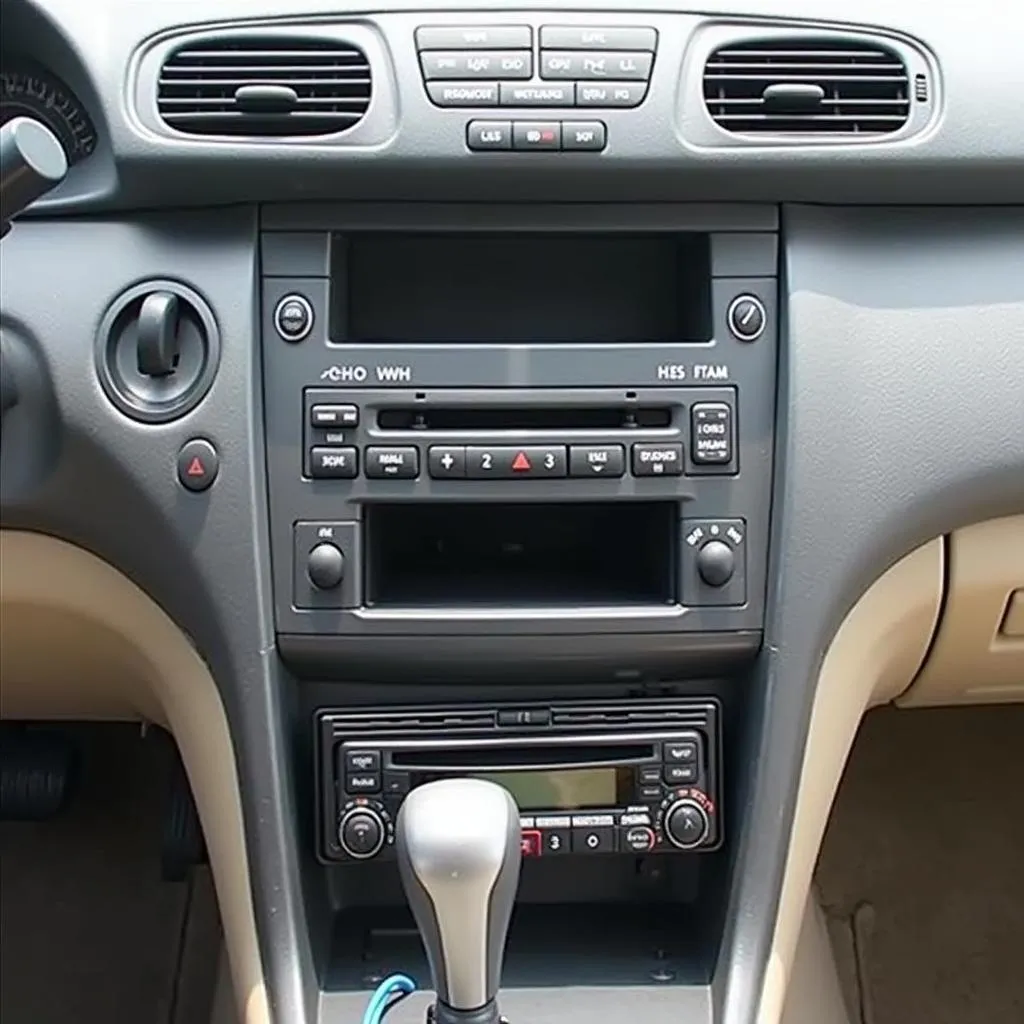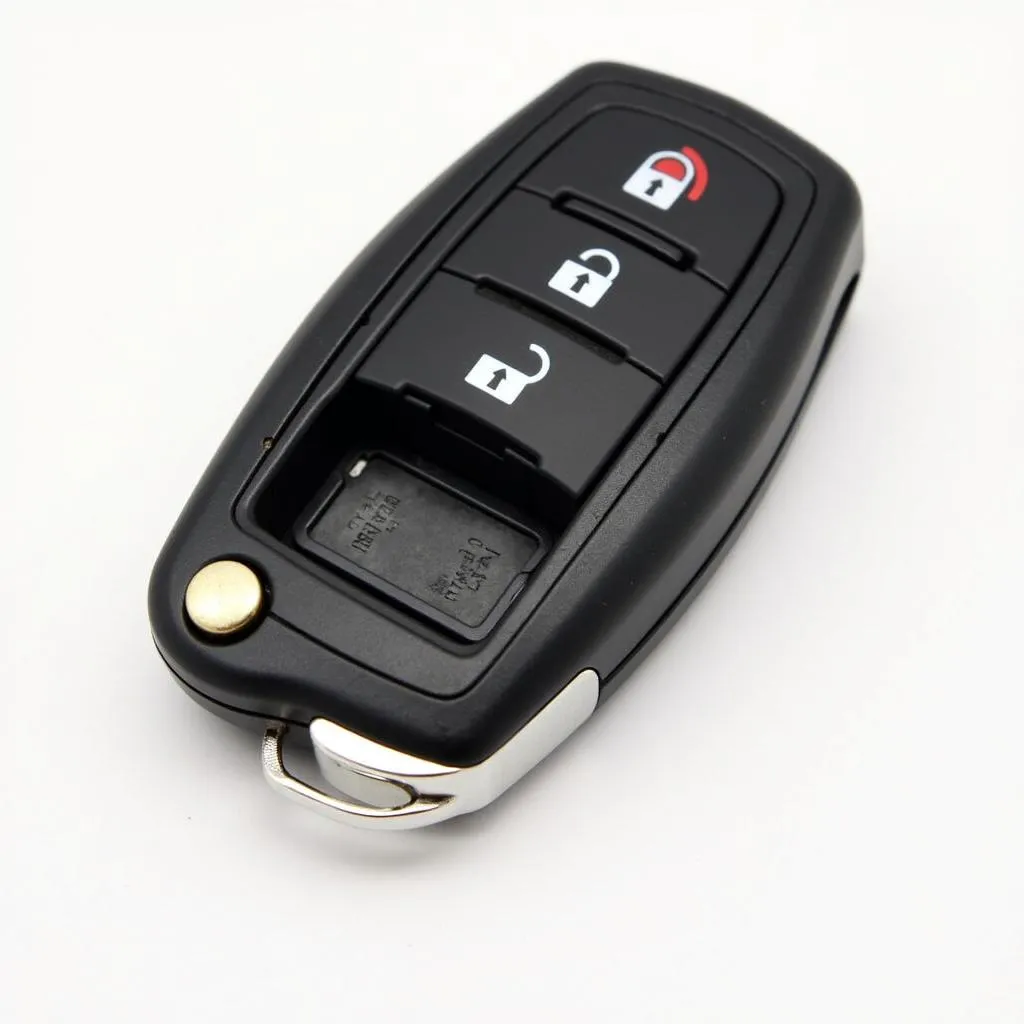The “Mercedes Check Brake Pad Wear Warning” is a common issue that Mercedes-Benz owners may encounter, indicating that the brake pads are worn down and need replacement. This warning is crucial as it signifies a potential safety concern, and ignoring it can lead to brake failure. In this article, we will delve into the causes, symptoms, and troubleshooting steps to resolve this issue.
Understanding the Mercedes Brake Pad Wear Warning System
Mercedes-Benz vehicles are equipped with a sophisticated brake pad wear warning system. This system uses various sensors to monitor the thickness of the brake pads. When the pads reach a predetermined wear limit, the warning light on the dashboard will illuminate, alerting the driver to the need for replacement.
Common Causes of the Brake Pad Wear Warning
The most common cause of the Mercedes brake pad wear warning is simply that the brake pads are worn out. Brake pads are designed to wear down over time as they help slow down the vehicle. Once they reach a certain level of wear, they need to be replaced.
Other possible causes include:
- Incorrectly Installed Brake Pads: If the brake pads were installed incorrectly, they could wear out prematurely.
- Faulty Brake Pad Sensor: The sensor that monitors the brake pad thickness could be malfunctioning, triggering a false warning.
- Aggressive Driving Habits: Frequent hard braking or driving on rough terrain can accelerate brake pad wear.
- Overheating: Brake pads can overheat, leading to premature wear.
Symptoms of Worn Brake Pads
Besides the dashboard warning light, here are some other symptoms that might indicate worn brake pads:
- Squealing or Grinding Noise: You may hear a squealing or grinding noise when applying the brakes, indicating that the brake pads are worn down to the metal backing.
- Increased Braking Distance: The vehicle may require a longer distance to stop, indicating a loss of braking efficiency.
- Vibration in the Brake Pedal: You might feel vibration in the brake pedal when you press it, suggesting that the brake rotors are warped.
Troubleshooting and Repairing the Issue
If your Mercedes Check Brake Pad Wear Warning light comes on, it is essential to address the issue immediately. Here’s a step-by-step approach to troubleshoot and repair the problem:
- Check the Brake Pads: The first step is to visually inspect the brake pads. You can do this by removing the wheels and examining the pads.
- Verify Brake Pad Wear: If the pads are worn down to the wear indicator, they need to be replaced. The wear indicator is a small metal strip that rubs against the rotor when the brake pads are thin, producing a high-pitched squealing sound.
- Inspect the Brake Pad Sensors: Check the brake pad sensors for any damage or corrosion.
- Inspect the Brake Rotors: While checking the brake pads, examine the brake rotors for any wear, grooves, or warping. If the rotors are damaged, they should be resurfaced or replaced.
- Professional Replacement: It is highly recommended to have a qualified mechanic replace the brake pads and rotors. They will have the necessary tools and expertise to ensure the job is done correctly.
Importance of Regular Brake Pad Maintenance
Regular maintenance and inspections are crucial for preventing brake pad wear issues and ensuring optimal braking performance.
- Visual Inspections: Have a mechanic visually inspect your brake pads at least once a year or every 10,000 miles, depending on your driving habits.
- Brake Fluid Flush: The brake fluid should be flushed every 2-3 years or 30,000 miles to prevent contamination and ensure optimal braking.
FAQs
How often should I replace my brake pads?
The lifespan of brake pads varies depending on driving habits, driving conditions, and vehicle type. However, as a general rule of thumb, brake pads should be replaced every 25,000 to 50,000 miles.
What happens if I ignore the brake pad wear warning?
Ignoring the brake pad wear warning can lead to severe consequences, such as:
- Brake Failure: If the brake pads wear down completely, the brake rotors will start grinding against the metal backing, leading to a sudden loss of braking ability.
- Damage to the Brake Rotors: Worn brake pads can cause damage to the brake rotors, leading to costly repairs.
- Reduced Vehicle Safety: Worn brake pads significantly reduce the vehicle’s ability to stop quickly, putting you and other drivers at risk.
Can I replace the brake pads myself?
While some people are comfortable replacing their brake pads themselves, it’s not recommended unless you have the necessary experience and tools. It’s essential to have the brakes correctly installed to ensure safe braking performance.
What is the cost of replacing brake pads?
The cost of replacing brake pads can vary depending on the make and model of your vehicle, the type of brake pads used, and the labor costs. However, you can expect to pay between $100 and $500 for a brake pad replacement.
Conclusion
The Mercedes Check Brake Pad Wear Warning is a crucial safety feature that alerts drivers to potential brake pad issues. Promptly addressing this warning is essential for maintaining safe driving conditions and avoiding costly repairs. By understanding the causes, symptoms, and troubleshooting steps, you can ensure your Mercedes brakes remain in optimal working condition.
Remember, regular maintenance and inspections can help prevent brake pad wear and ensure your vehicle’s safety. If you experience any of the symptoms mentioned above, it’s best to have your brake system inspected by a qualified mechanic as soon as possible.


